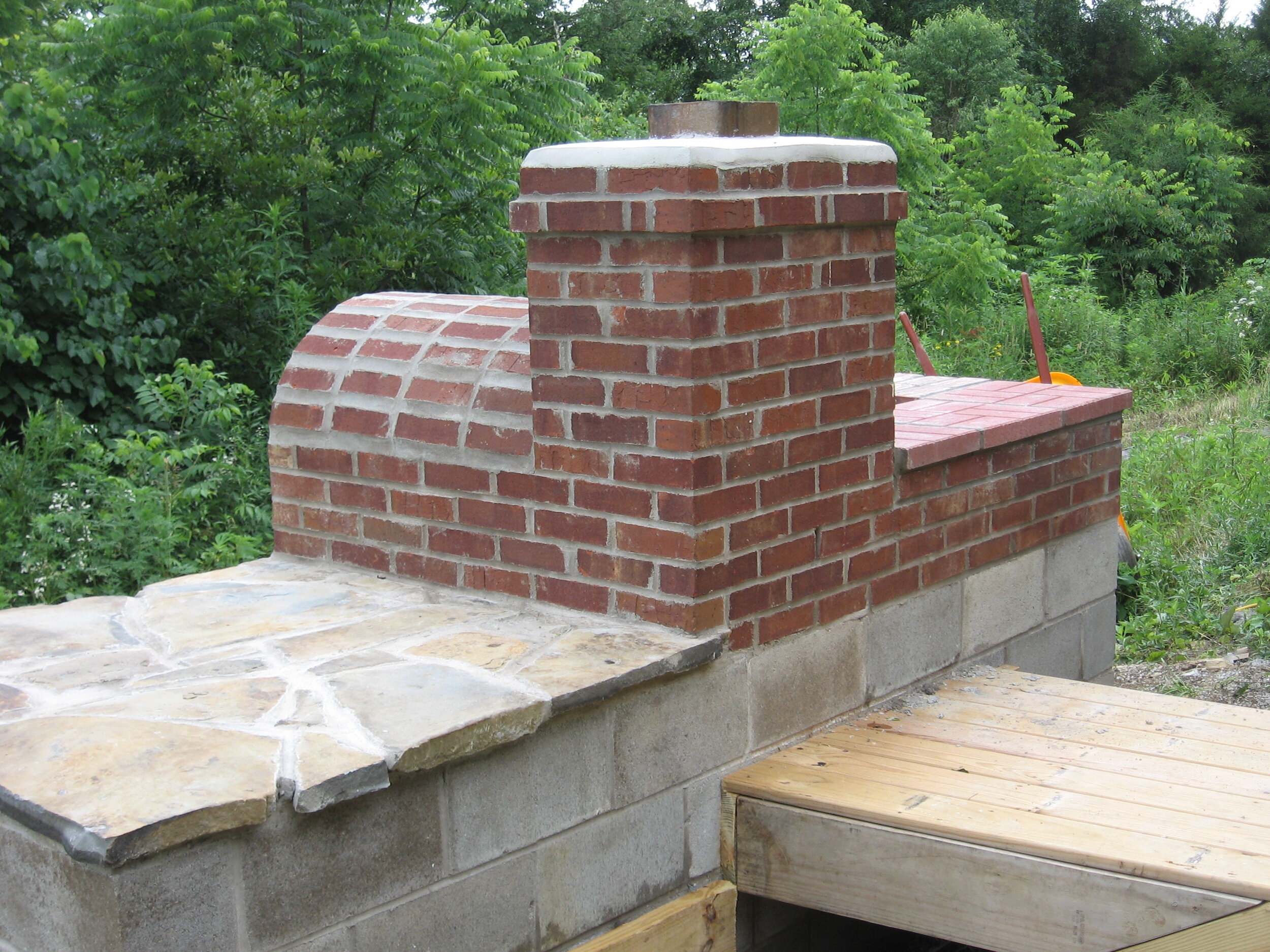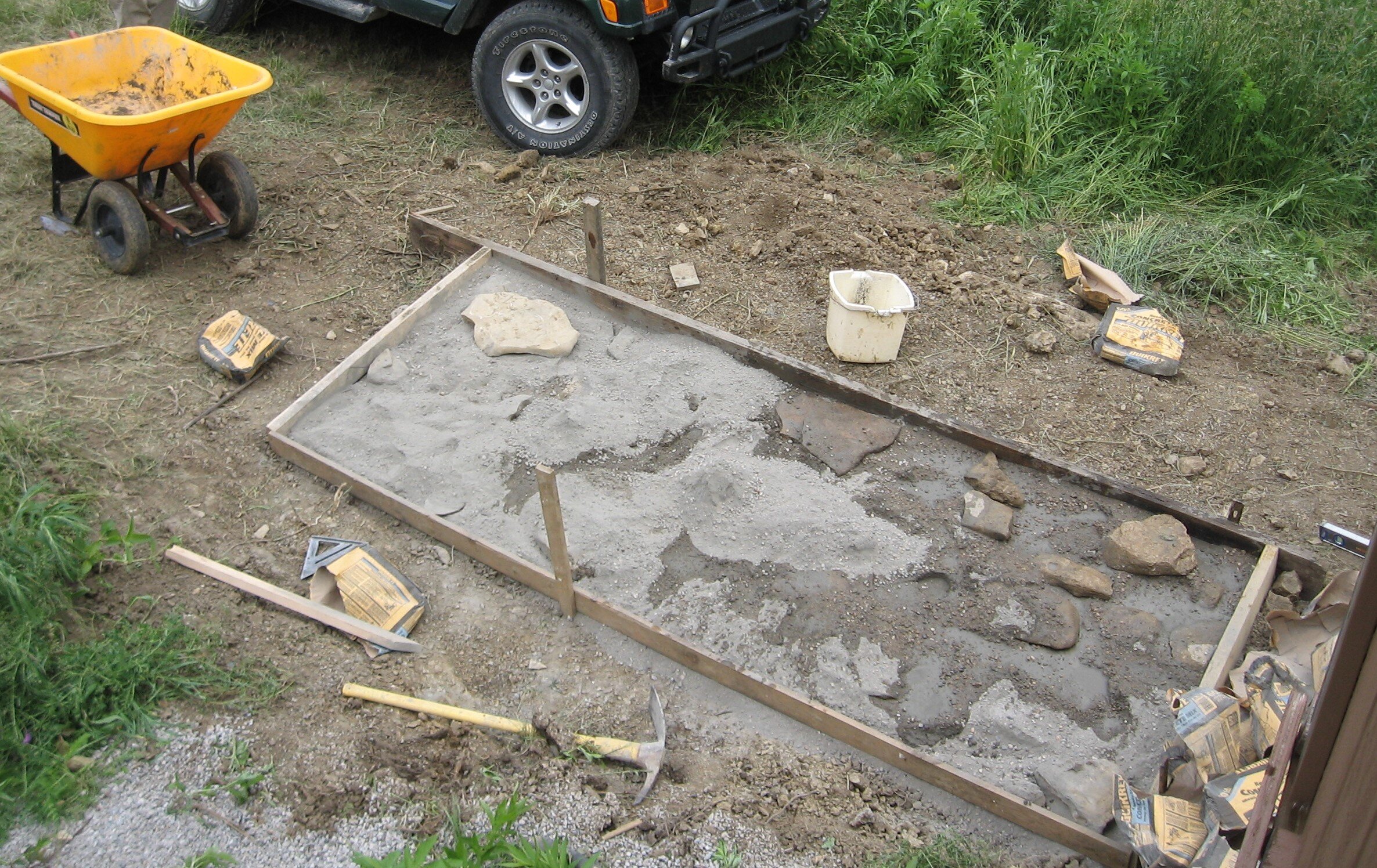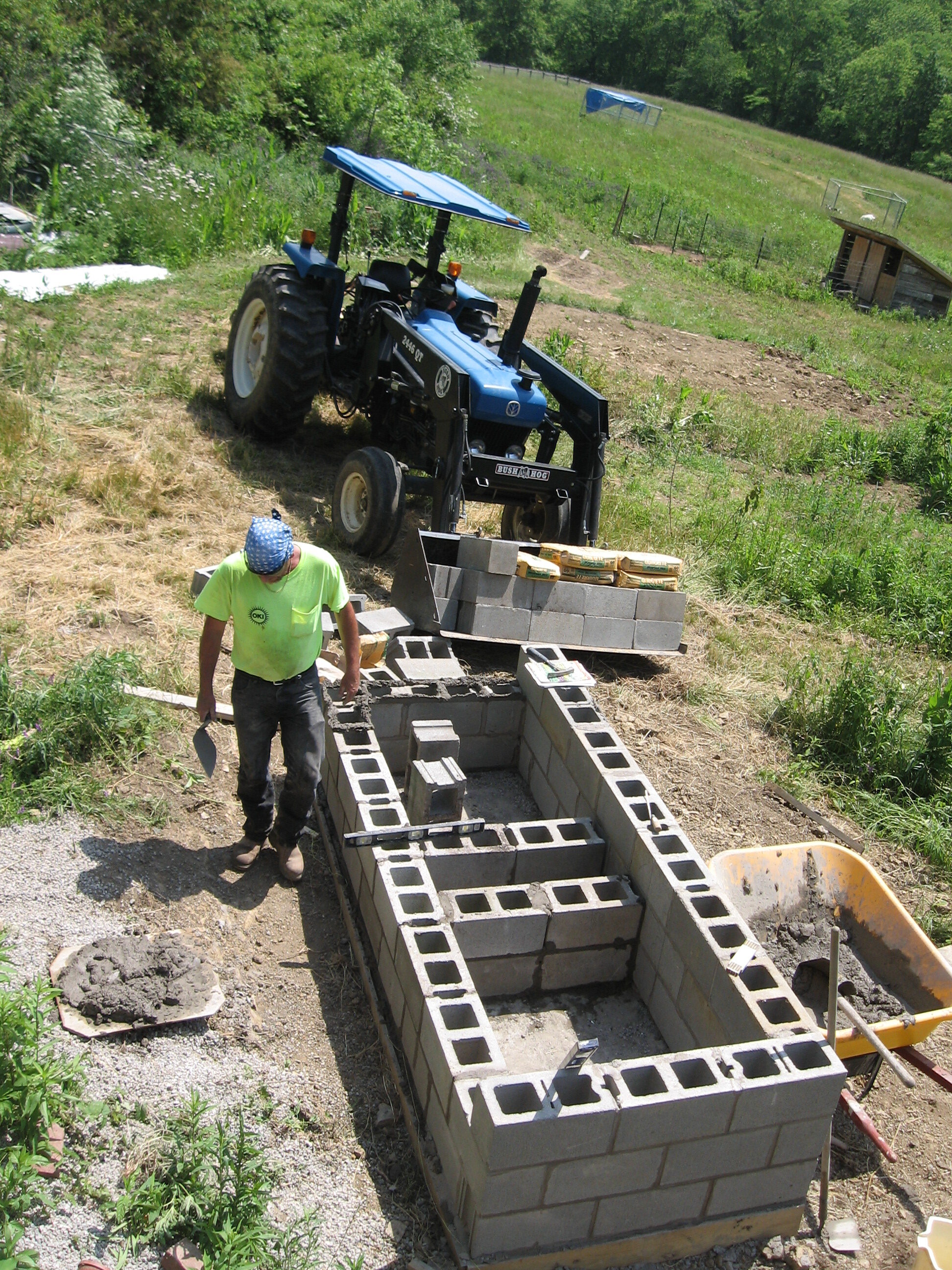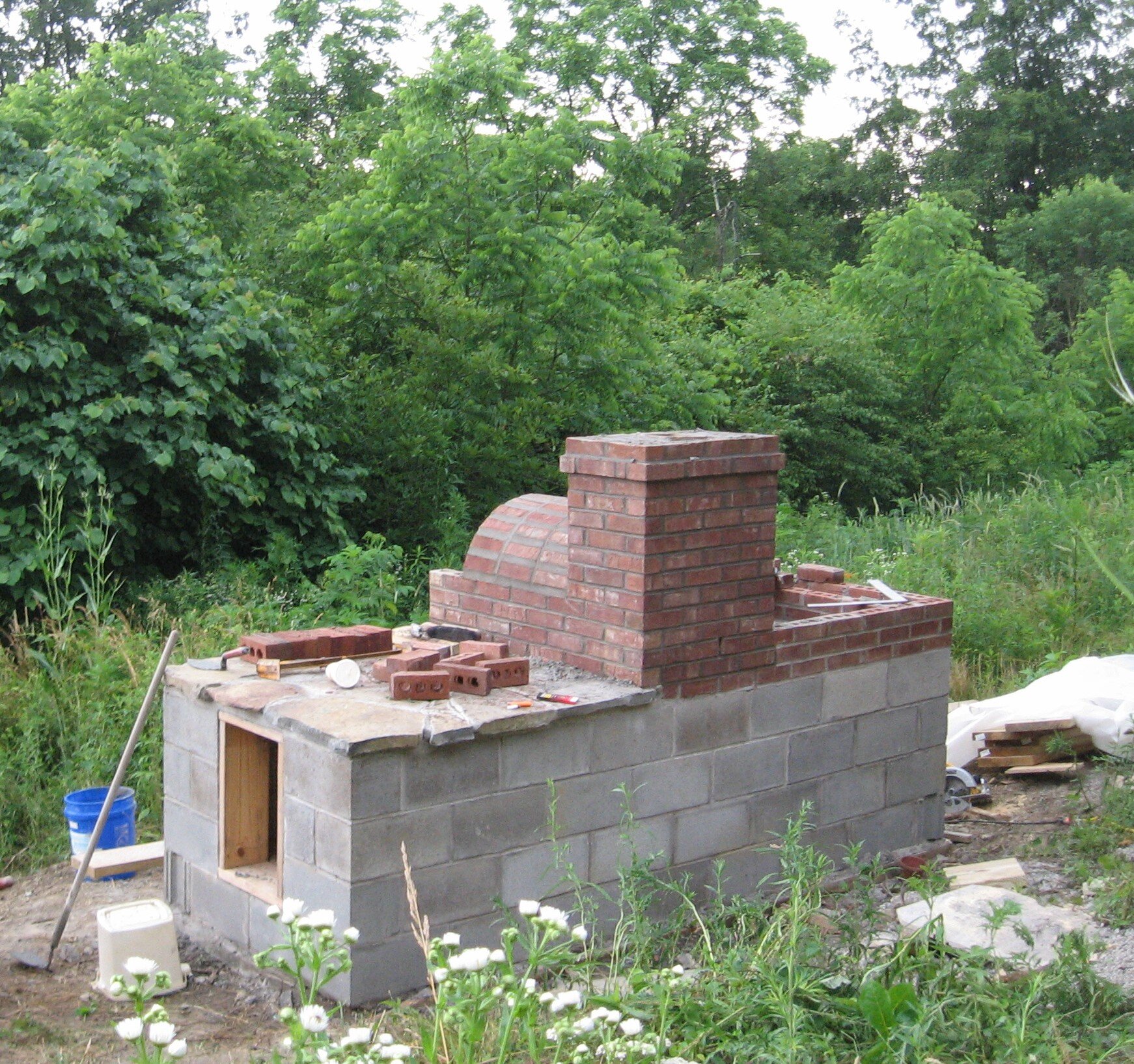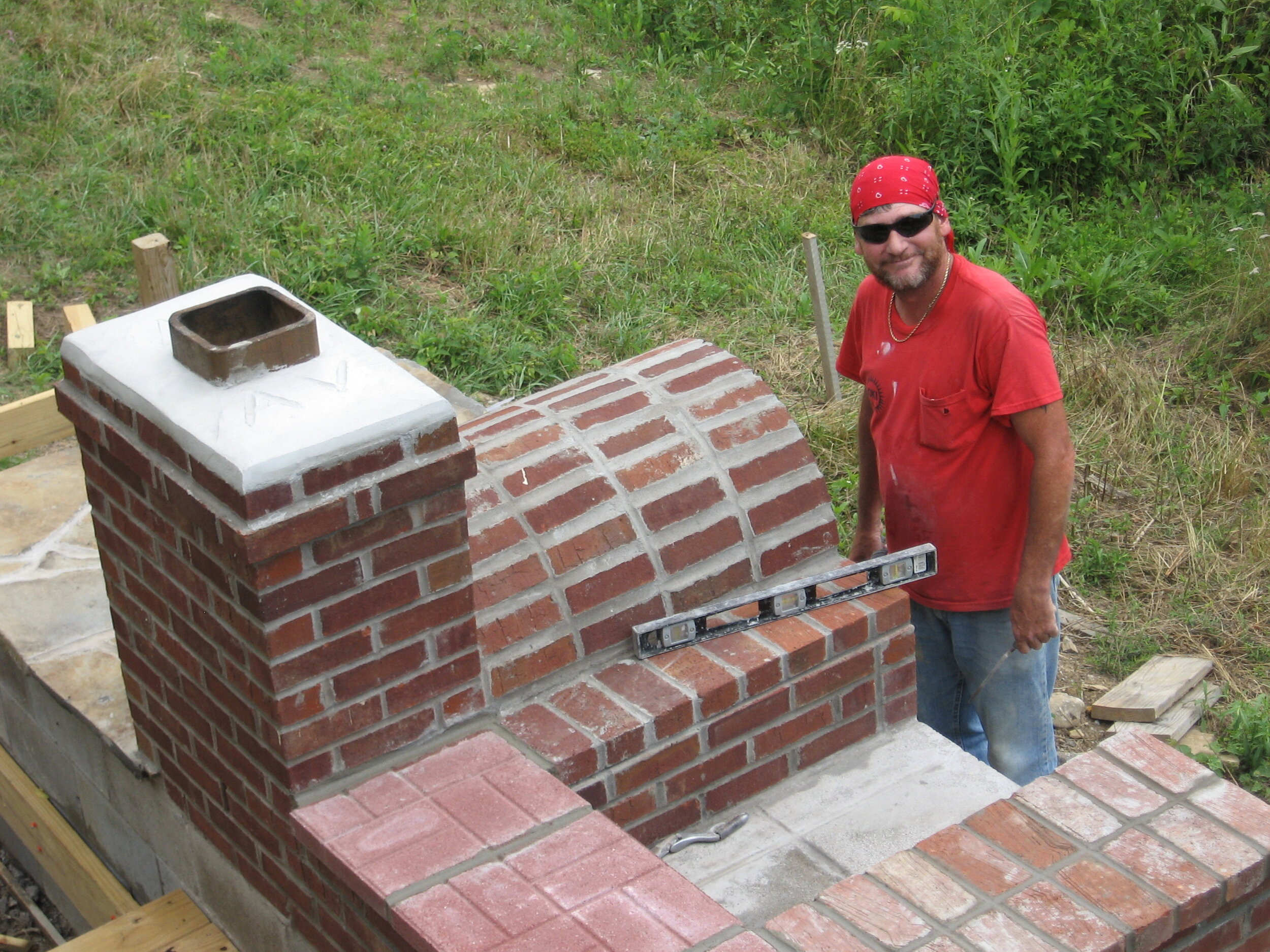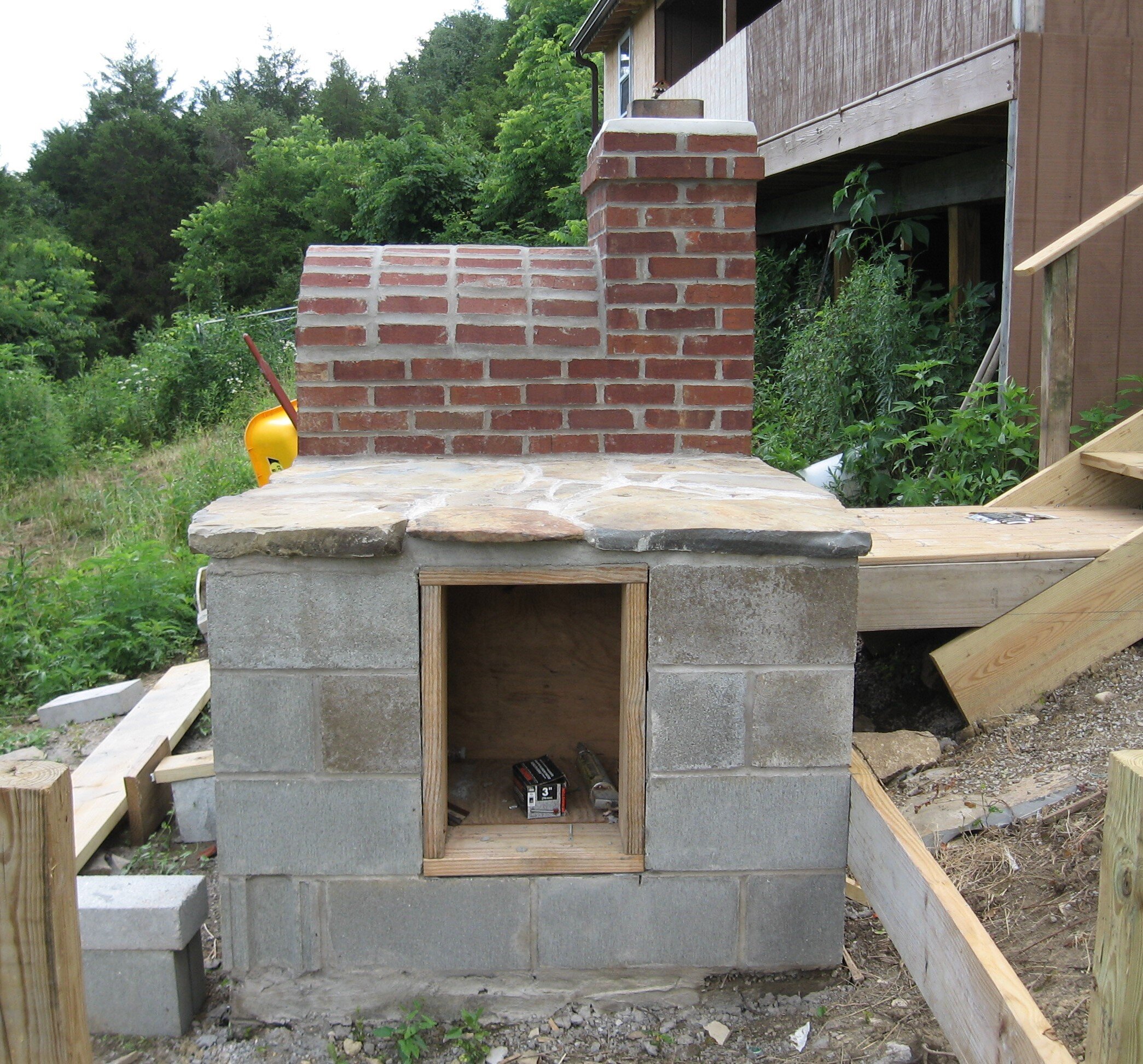An outdoor kitchen is great for those persons living off-grid and needing some additional cooking options. It also makes a wonderful place to gather with family and friends.
An outdoor kitchen can provide you with a place to cook when the weather is hot or even in the dead of winter. You may have a set up with a grill, a campfire or a brick oven. Put out a table and chairs, some flower pots and voilà.
There are many ways to plan and design an outdoor kitchen so that it can meet your needs. Off-grid designs that use simple, practical, and functional ideas can be hard to find.
I am going to share with you the example of what I did and building photos along the way.
What To Consider When Planning an Outdoor Kitchen
My outdoor kitchen is pretty simple. I live in a small cabin that I built myself with some help from family and friends. We all agree our favorite room is the partially enclosed back porch which overlooks the outdoor kitchen and backyard.
The back porch extends down to a lower porch which is where I have my outdoor kitchen. There I have a brick oven and brick grill as well as a solar oven and a small gas camping stove for canning.
An outdoor propane stove works great for providing consistent heat while canning
My outdoor kitchen includes a sitting area and planters that hold flowers and herbs. As well as cooking it makes a nice place to read or visit on hot summer afternoons.
Locate your outdoor kitchen close to your house so it’s easy to access.
Place your outdoor kitchen in a location where it’s cool in summer. This may be an area where it gets shade from the home or nearby trees.
Is close to the main kitchen so you have access to supplies.
Think about how you will access or carry supplies to the area. I did not do this step! I need to go down seven steps to get to may lower porch which is not a good deal when I am carrying things. (this led me to put in some more storage space)
Will you want to run plumbing or electricity to your kitchen? Solar and rain catchment work well. Think about set up to those systems.
Plan first and draw it out on graph paper. (I am a big proponent of planning - read my article on garden planning)
Advantages of an Outdoor Kitchen
My outdoor kitchen gives me a place outside to cook. As someone who lives off-grid I do not have air conditioning and baking or canning inside in the summer makes the house extremely hot.
Can cook in the shade or under an awning so that it’s a cooler location.
Make delicious meals from fresh food
Great space to make messy crafts such as candles and soaps
Saves on energy consumption.
Take advantage of being outdoors in the fresh air and enjoying nature.
Low cost and practical way to extend the living area.
Improves the value of the home.
Also for me, this is a simple and practical option. If you have read my article on propane versus solar refrigeration - you know that I gave up on most propane appliances. My outdoor kitchen gives me other options to cook and can.
Where To Put Your Outdoor Kitchen
My cabin is built into a hillside and has an elevated three-sided back porch that is about four feet off the ground. From there I have steps that go down to a lower level back porch.
This porch wraps around the brick oven and is a platform made from pressure-treated wood. The brick oven and grill are on a foundation of cement blocks.
Here are some pictures of our construction so that you can see the building process.
How Much Does An Outdoor Kitchen Cost?
The trendy cooking and building magazines are full of outdoor kitchen designs that cost more than my home! While they are fun to look at they are not practical for the average off-grid family.
My outdoor kitchen costs including decking lumber and paying my friend to lay the brick was less than $500.00. I saved some money because the bricks were leftover from another friend’s project and given to me for free. Many of the cement blocks were also from that same project.
The rocks for the countertop came from my creek.
Tip: Anytime you are doing building projects reach out to friends and others that may have leftovers or extra materials. I let people know that I am glad to come to help them with their project in exchange for some materials. Barter is a great thing!
The porch is supported on 4x4’s which were put two feet into the ground. The actual standing surface was made with 1x6 decking lumber.
I will say that has been very stable except for one section where my horse stepped on it and cracked two boards! So maybe 2x lumber if your animals are large and overly curious.
Brick Oven and Grill
I did hire a friend to do the brickwork as that was not in my skill set. While not a professional he was experienced with bricklaying and also did the brick around my woodstove. However, if you have some experience with using brick and mortar then I think this is a great DIY project.
There are many different styles and ways to build an oven. Think about the size and shape you want. Being Italian, I liked the look of the traditional brick pizza ovens.
Mother Earth News has a plan for a more contemporary square oven made from cement blocks.
This video is a long one but gives an example of a step by step process of his construction.
You can also build an earth oven. These are also great for baking bread and pizza. Before building a brick oven my son and I made an inexpensive earth oven by following the steps in the book Build Your Own Earth Oven: A Low-Cost Wood-Fired Mud Oven, Simple Sourdough Bread, Perfect Loaves
Solar Oven
A solar oven operates like a greenhouse on steroids. The reflective surfaces bounce the sun’s light waves into a dark-colored box with a glass lid. This causes a build-up in heat.
The commercially made ones are insulated to hold in the heat. A solar oven can actually get quite hot and can reach 300 degrees Fahrenheit.
I talk briefly about solar ovens in my article “Low-Cost Solar For Emergencies, Vacations, and Remote Cabins” however they are also fabulous for everyday types of cooking.
Obviously, solar ovens work best when it is sunny outside, which makes them perfect for summer cooking. I have a SunFlair Solar Oven and it is lightweight and easy to use.
Sinks
One of my future goals is to add a sink to my outdoor kitchen area. A small-scale rainwater catchment system works well in outdoor kitchens and can be pressure or gravity fed.
You can also just have a sink that drains into an underground grey water area. That way you can pour out water such as if you make pasta or have excess from canning.
Roof
My outdoor kitchen is uncovered so I can not use it during a thunderstorm. However, I still use it in all seasons.
Covering your outdoor kitchen with a simple shed roof or awning is simple and does not take a great deal of lumber. This would give you greater potential to use during inclement weather and also a dry place to store things.
Storage Space
Storage space is very handy and can help with not having to carry so many things back and forth (See Ame’s mistake from above!)
I have a nice storage area built in under my oven. It stays dry so that I can store charcoal and wood chips and cooking tools. I also use a square basket where I keep utensils and cooking supplies.
Tip: Making wood chips from the fire from your fruit prunings is great for the outdoor oven. They smell very nice when burning.
You can also build or purchase an outdoor storage unit
Ready To Cook?
When we see a brick oven we often think of pizza or bread. However, there are many different things you can cook in them. Some things I have done is baked potatoes, blackberry cobbler, baked apples, green bean casserole, and roasted vegetables.
The Stone Bake Oven Company has some great recipes.
Now that you have your brick or earth oven you need a good cookbook. Here is one of my favorites.
Author, Ame Vanorio has 27 years of experience living off-grid, is a certified teacher, and an organic farmer. She is the director of Fox Run Environmental Education Center and a licensed wildlife rehabilitator.
Check out our EVENTS page. Ame teaches classes locally and online about organic gardening, herbs, homesteading, green building, living off-grid and wildlife conservation. In addition, she is a freelance writer and writes for several gardening, tiny house and pet websites. She lives a sustainable life on her Kentucky farm with a myriad of domestic and wild animals.

